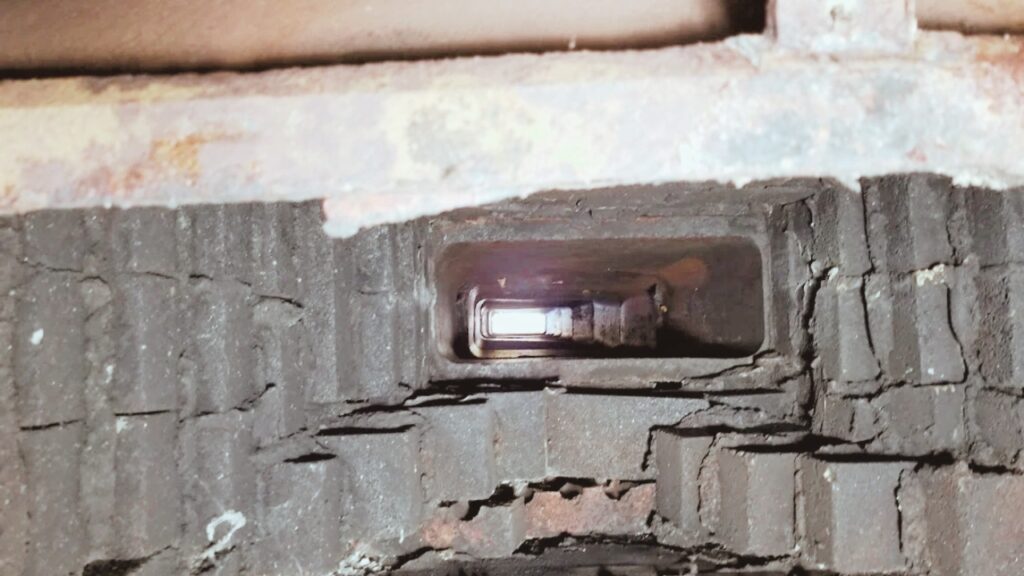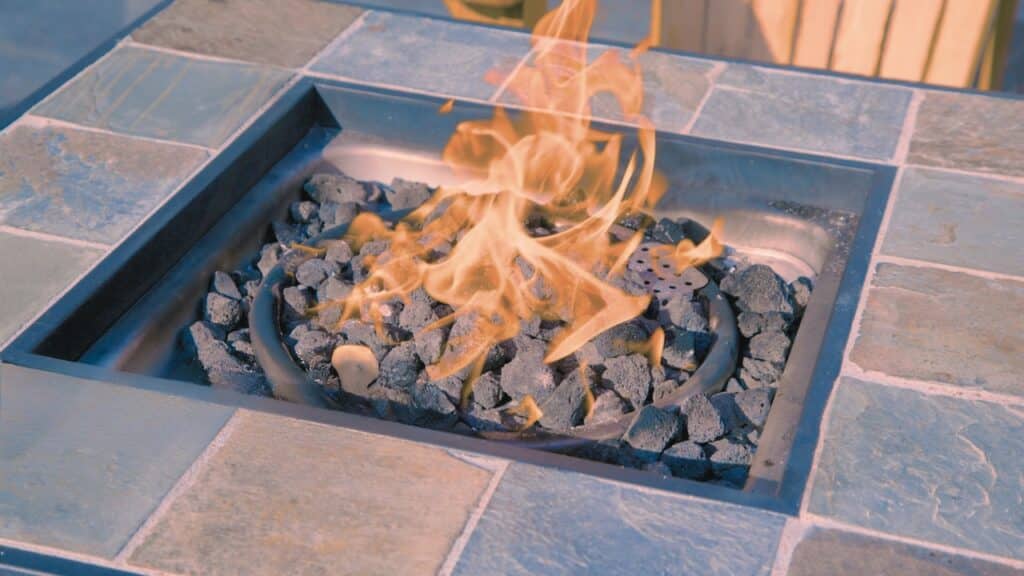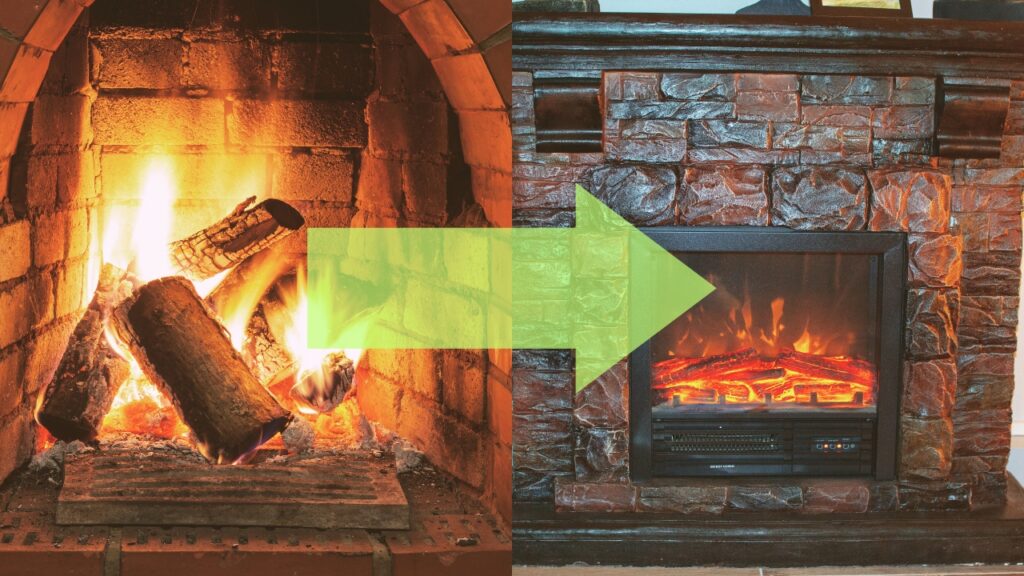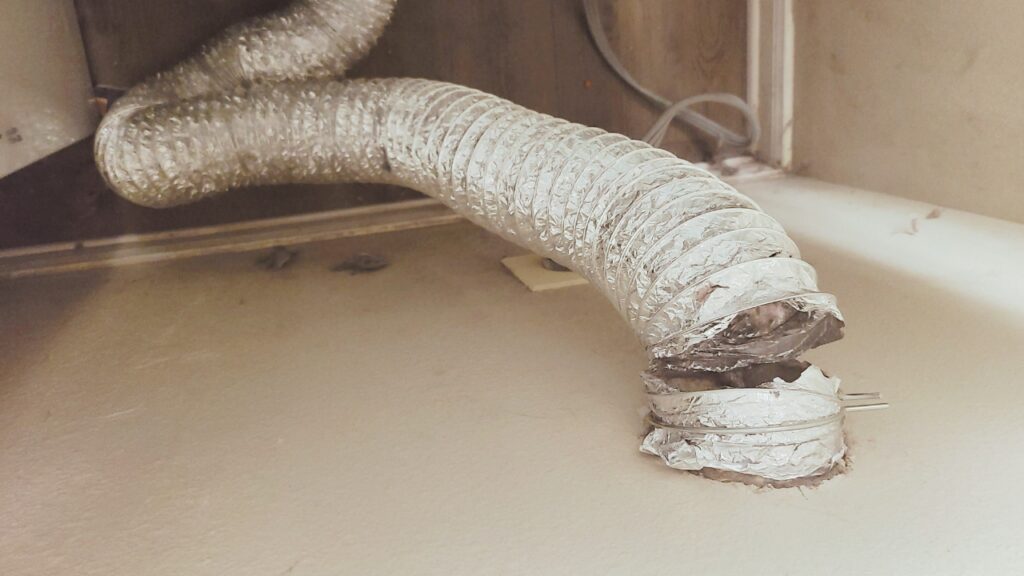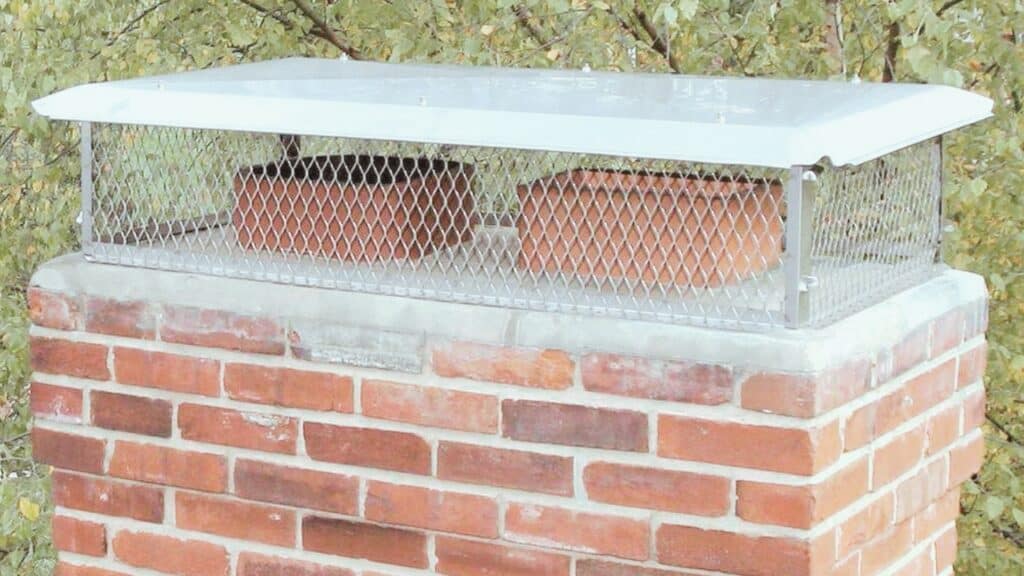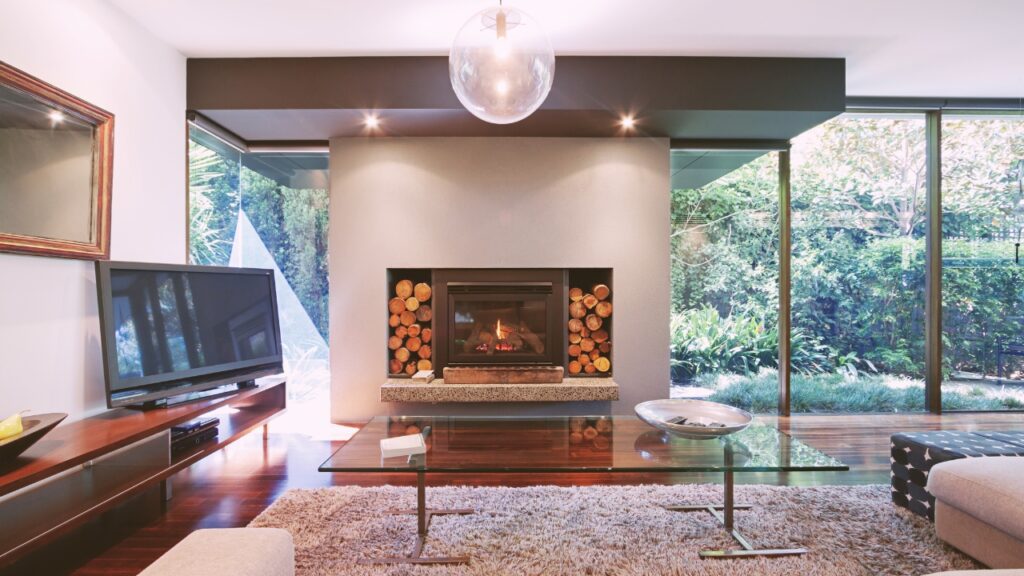Have you noticed your chimney bricks cracking, flaking, or chipping? If so, you may be dealing with a spalling chimney. Spalling is a common problem that many homeowners face, but it can be prevented and repaired.
Spalling chimney is a type of deterioration that occurs when the surface of the brick becomes damaged and begins to flake off or crumble. This can be a significant problem for homeowners, weakening the chimney’s structure and making it more prone to collapse.
Spalling can occur for various reasons, including water damage, freeze-thaw cycles, high winds, heavy rain, or inadequate support.
This article will discuss what causes spalling in chimneys, how to prevent it, and how to repair any damage that has already been done.
Let’s get started!
Early Signs That You Are Going to Have a Spalling Chimney
Knowing the signs of spalling will help you catch it early and take the necessary steps to prevent further damage. Look for these common indicators:
Efflorescence or White stains
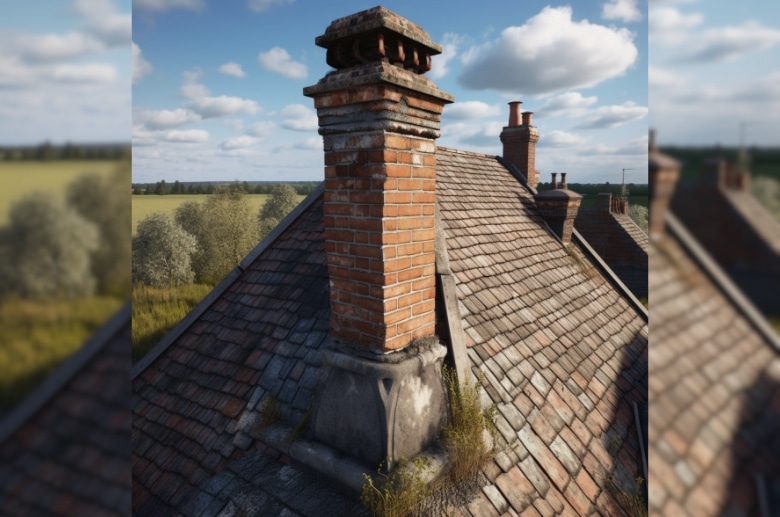
Efflorescence is a result of water traveling through the pores of the masonry and carrying minerals with it. As the water evaporates, it leaves behind a white, powdery deposit that can be unsightly damaging to the structure.
Efflorescence is typically caused by moisture entering the chimney through the top or sides or water leaking through the roof. It can also be caused by improper curing or sealing of the masonry.
Efflorescence is usually found on the chimney’s exterior but can also appear on the interior walls if there is a moisture problem.
If left unchecked, efflorescence can lead to a spalled chimney, weakening the structure of the chimney and making it more susceptible to collapse.
——
Do You Need to Hire Chimney & Fireplace Expert?
Get free quotes from qualified experts near you. No commitment required!
——
Debris Near the Chimney
Debris near the chimney can occur when debris, such as leaves, twigs, and branches, accumulate in or on the roof near the chimney. This debris can often result from strong winds or storms or accumulate over time if the chimney needs to be maintained correctly.
The appearance of debris near the chimney can vary depending on the type and amount of debris present. It may look like a small pile of leaves and twigs or a larger accumulation of branches and other debris.
In some cases, the debris may be visible from the ground, while it may be more challenging to see in others. Debris near the chimney can contribute to spalling by trapping moisture against the chimney, leading to water damage and weakening the structure.
This can weaken the chimney’s structure and make it more prone to collapse, making it essential to remove any debris that accumulates near the chimney.
Loose Bricks When You Touch Them
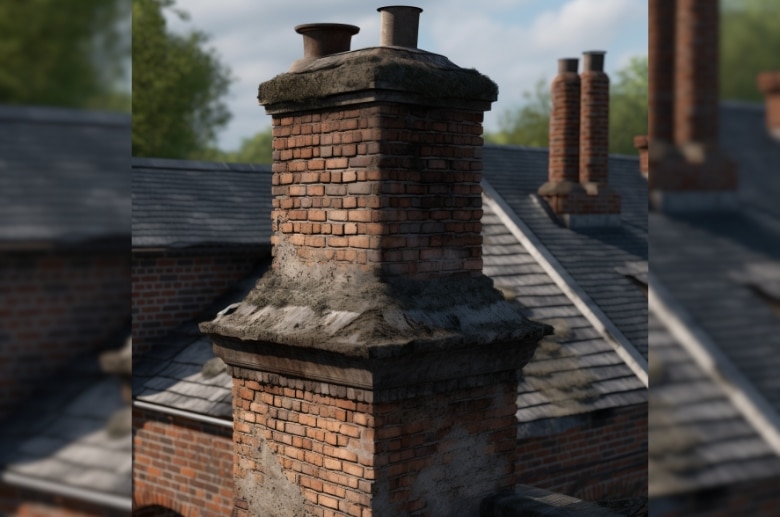
Loose bricks in a chimney can occur when the mortar holding them in place begins to deteriorate or when the bricks themselves have become weakened due to age or other factors, including:
1. Poor construction
2. Lack of proper maintenance
3. Weakening mortar joints
4. Time and weathering of the materials used to build a chimney
5. Water infiltration or exposure to moisture from rain, snow, fog, and humidity
These bricks feel loose and move slightly within the chimney structure when touched.
Loose bricks in a chimney can come in many forms – crumbling, chipped, worn out, or weathered. Don’t let the look deceive you; any loose brick should be addressed immediately to avoid further damage!
If left unchecked, loose bricks in a chimney can also lead to a spalling chimney. This can lead to a leaning chimney, further deterioration of the chimney, and a potential safety hazard if the loose bricks fall or the structure collapses.
Moisture in Your Fireplace
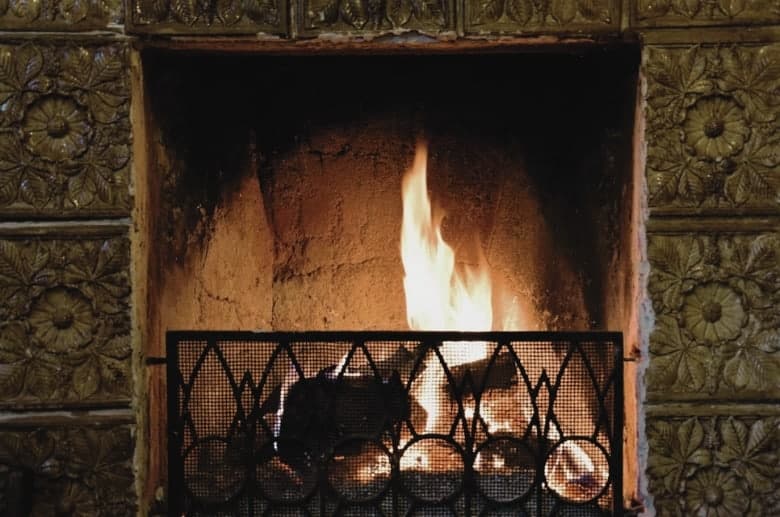
When the outside air is especially humid, or you have a hole in your chimney or roof, moisture can seep into your fireplace. Additionally, inadequate ventilation of the chimney may also lead to increased humidity within the hearth.
Moisture in your fireplace may appear as condensation on the inside walls of the chimney or as water droplets on the fireplace floor. It may also appear as rust on metal components within the fireplace.
If moisture is not addressed, it can lead to a spalling chimney, which can weaken the structure of the chimney and potentially cause it to collapse.
It is important to address moisture in your fireplace as soon as it is noticed to avoid further damage and ensure your home’s safety.
Hard to Open Dampers
As your chimney ages, it may spall due to the wear and tear of weathering. If this occurs, you will notice that its surface has become rough and uneven, making operating the damper difficult or even impossible.
- One reason is that the damper may not be able to slide smoothly along the surface of the chimney due to the roughness caused by the spalling. This can cause the damper to get stuck or require more force to move, making it difficult to open or close.
- Another reason is that the spalling may have caused structural damage to the chimney, causing it to become misaligned or unstable. This can make it difficult to open or close the damper as it may not be able to align correctly with the opening in the chimney.
If the damper is not managed routinely or opened and closed correctly, it can also cause a spalling chimney due to clogging with debris or moisture. This blockage of air flow will lead to further corrosion and crumbling of the chimney structure.
Proper usage and managing your damper are essential for long-term safety and functionality in your home!
Damp Areas Near the Chimney
A chimney breast is a part of the wall around a fireplace. Damp can be found near the chimney when moisture is in the air or water gets onto that area. The moisture can cause damage to your walls and make them look dirty.
Damp areas near the chimney can occur due to various reasons, including:
- Poor ventilation,
- Leaks in the chimney structure, and
- Improper flashing around the chimney.
Excess moisture can accumulate around the chimney and lead to visible signs of water damage, such as stains, mold growth, and mildew. These damp areas are easy for anyone to identify.
The odors coming from damp areas near the chimney can be musty and unpleasant, indicating the presence of mold and mildew. In severe cases, the dampness may also lead to an unpleasant smell emanating from the chimney, as the moisture can cause the soot and creosote inside the chimney to break down and emit a pungent and unpleasant odor.
If left unchecked, damp areas near the chimney can also lead to a spalling chimney. This can be caused by the freeze-thaw cycle, where water gets trapped in the chimney and expands when frozen, leading to cracks and chips on the surface.
Overall, it is crucial to address damp areas near the chimney as soon as possible to prevent further damage and ensure the safety and efficiency of the chimney. This may involve sealing leaks, improving ventilation, and properly flashing the chimney to prevent water infiltration.
——
Do You Need to Hire Chimney & Fireplace Expert?
Get free quotes from qualified experts near you. No commitment required!
——
6 Common Causes of a Spalling Chimney
As described, a spalling chimney results from the gradual deterioration of the brick and mortar that make up your chimney. Common causes of this include:
1. The Climate
Extreme weather conditions such as freezing temperatures or fluctuations in temperature can cause the brick-and-mortar to expand and contract, leading to cracks on the surface.
The following environmental factors can also contribute to chimney spalling:
Snow
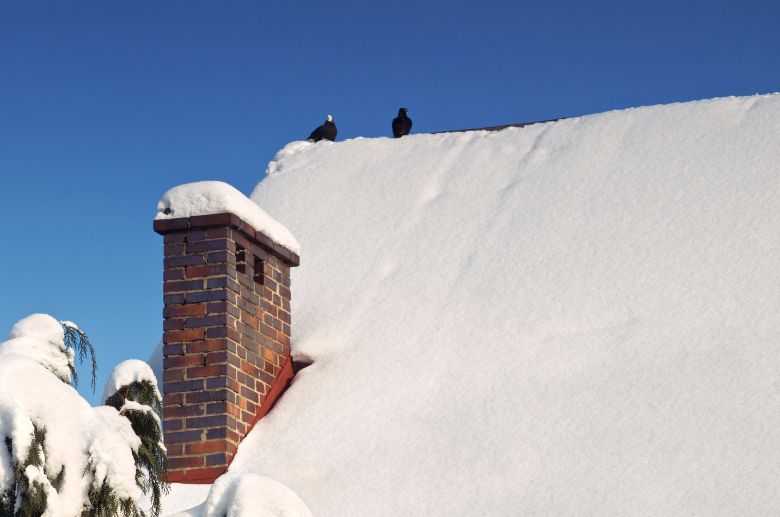
Snow can significantly affect bricks, especially if it is allowed to accumulate on a brick surface for an extended period. The weight of the snow can put added pressure on the bricks, which can cause them to crack or break.
Additionally, the freezing and thawing cycle that often occurs with snow can cause the bricks to expand and contract, leading to further damage. Removing snow from brick surfaces as soon as possible is important to minimize the risk of damage.
Fog
Fog can also have a negative impact on bricks, as it can cause the bricks to become damp. If the bricks remain damp for an extended period, they may become more susceptible to damage from freezing temperatures.
It is important to ensure that the bricks are allowed to dry out thoroughly after exposure to fog to minimize the risk of damage.
Rain
Rainfall can have a detrimental impact on bricks, eroding the mortar and eventually making them weak. To prevent potential destruction from rain, thoroughly seal your bricks with an appropriate sealant and routinely check the condition of gutters and downspouts.
Wind
Wind can cause damage to bricks if it is strong enough and carries debris. To avoid this, you need to ensure that the bricks are tightly secured so they cannot be affected by the wind’s force. These steps will help protect your brickwork from being damaged due to high winds.
Other Weather Factors
Other weather effects, such as extreme heat or cold, can negatively impact bricks. Extreme heat can cause the bricks to dry out and become more brittle, while extreme cold can cause the bricks to become more prone to cracking.
Overall, it’s essential to consider the potential impact of weather on bricks when designing or maintaining a chimney structure. Proper sealing, waterproofing, and other protective measures can help to mitigate the effects of weather and extend the lifespan of your chimney.
2. Pressure Washing
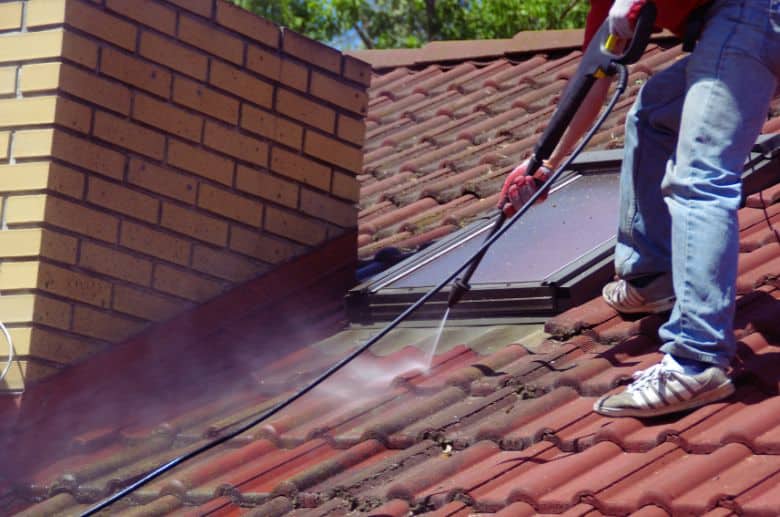
Besides the climate, human factors also contribute to a spalling chimney. In this case, pressure washing is one of the culprits of spalling brick chimneys.
Pressure washing a chimney uses a high-pressure water jet to remove dirt, dust, grime, moss, and other debris attached to your chimney’s surface. The force of the water jet is powerful enough to penetrate deep into crevices and cracks in the masonry or brick, ensuring that all dirt and grime are removed quickly.
To safely wash the chimney bricks to avoid chimney spalling, follow these steps:
- Protect the area around the chimney: Cover any plants, shrubs, or other landscaping around the chimney with plastic sheeting to prevent damage from the pressure washing.
- Use the correct pressure setting: Use a pressure washer with a low-pressure setting (around 1,000 to 1,200 PSI) to avoid damaging the bricks. Higher pressure can cause the bricks to crack or spall.
- Use the correct nozzle: Use a nozzle with a wide angle (40-degree) spray pattern to evenly distribute the water and avoid concentrating the pressure on one area.
- Clean from the top down: Start cleaning the bottom of the chimney and work your way down. This will prevent water from dripping and creating standing water on the bricks below.
- Avoid high heat: Do not use hot water or high heat settings on the pressure washer, as it can cause the bricks to crack or spall.
- Let the bricks dry completely: After washing the chimney, allow the bricks to dry entirely before lighting a fire. This will prevent the bricks from absorbing moisture and potentially causing spalling.
Following these steps, you can safely wash your chimney bricks and avoid spalling.
3. Sandblasting
Sandblasting is a process where a high-pressure stream of abrasive particles is used to clean or prepare a surface for painting or coating. It is often used on chimney bricks to remove layers of soot, dirt, and grime that accumulate over time.
However, the high-pressure stream of abrasive particles can erode the surface of the bricks, causing them to become more porous and prone to spalling.
One of the leading causes of spalling in chimney bricks is the use of abrasive materials during sandblasting. The abrasive particles can wear down the surface of the bricks, causing them to become more prone to spalling.
This can be especially problematic if the bricks are damaged or weak, as the sandblasting process can exacerbate the existing damage.
Overall, sandblasting can be a valuable tool for cleaning and preparing chimney bricks, but it is essential to use it cautiously.
4. Sub-Standard Mortar
Using sub-standard mortar can significantly reduce the lifetime of your chimney and increase the risk of spalling bricks. The weak mortar will not be able to properly secure the bricks together, resulting in a poor seal and potential water infiltration.
When it comes to chimney applications, the U.S. National Parks Service highly recommends Type N mortar, a combination of 1 part cement, 1 part lime, and 5 to 6 parts sand for optimal performance.
If you’re looking for a durable mortar mix to stand the test of time, especially in extreme weather conditions, opt for Type S. This mixture is created from 1 part cement, 1/2 part lime, and 4 to 4-1/2 parts sand—a surefire recipe for lasting results.
5. Defective or Faulty Construction and Architecture
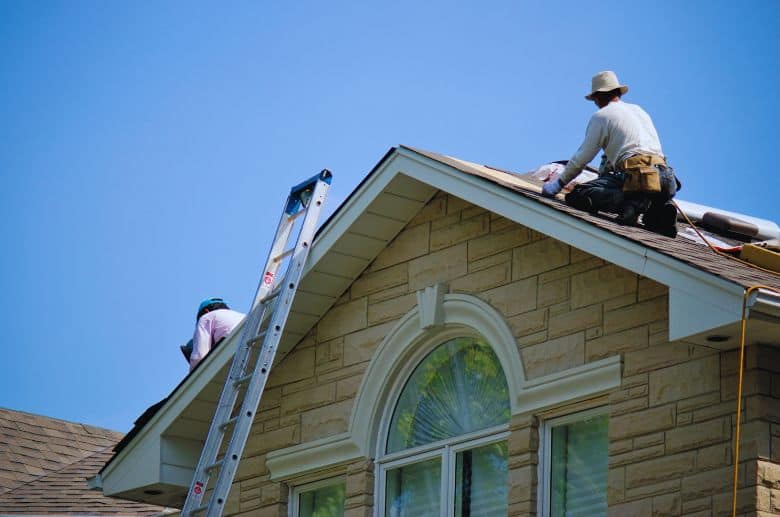
Substandard construction can also contribute to spalling bricks due to a lack of proper techniques and materials.
- If the bricklayer does not properly mix or apply the mortar correctly, the bricks may not be securely held in place and begin to crack or crumble over time. This can also occur if the bricks are of low quality or have not been adequately cured before use.
- The utilization of salvaged bricks can also result in spalling due to their weakened state, stemming from possible damages incurred during their earlier use. If these bricks are not properly inspected before being used in construction, they may not be able to withstand the same amount of stress as new bricks and may begin to crack or crumble.
- A settling foundation can also contribute to spalling chimneys, as the shifting of the foundation can cause the chimney to become unstable and prone to cracking.
If the chimney is not adequately supported or anchored to the foundation, it may begin to lean or shift, causing the bricks to become stressed and ultimately spall.
Additionally, if the chimney foundation itself is not constructed correctly, it may not be able to adequately support the weight of the chimney, leading to spalling.
6. The Layout of the Rooftop
Finally, if the rooftop has poorly designed or maintained gutters, leaks can occur, which allow water to flow onto the bricks. This can lead to the bricks becoming saturated with water, causing them to weaken and eventually crumble or crack.
Similarly, suppose the rooftop has a configuration that does not allow for proper drainages, such as a flat roof or an inadequate slope. In that case, water can pool on the rooftop and eventually seep into the bricks.
This can also lead to damage, as the bricks are not designed to withstand prolonged exposure to standing water.
Overall, it is essential to properly maintain the gutters and ensure that the rooftop has an appropriate drainage system to prevent moisture from damaging the bricks.
——
Do You Need to Hire Chimney & Fireplace Expert?
Get free quotes from qualified experts near you. No commitment required!
——
Risks of Having a Spalling Brick Chimney
A spalling chimney can be dangerous, as the brick pieces can become loose and fall on anyone who may be nearby the chimney at the time of the collapse, potentially causing injury or even death.
Additionally, this damage can allow water to penetrate the chimney, making it prone to collapse over time.
More risks are associated with spalling bricks; we discuss them in more detail below.
Cracked, Leaning, or Even a Collapsed Chimney Stack
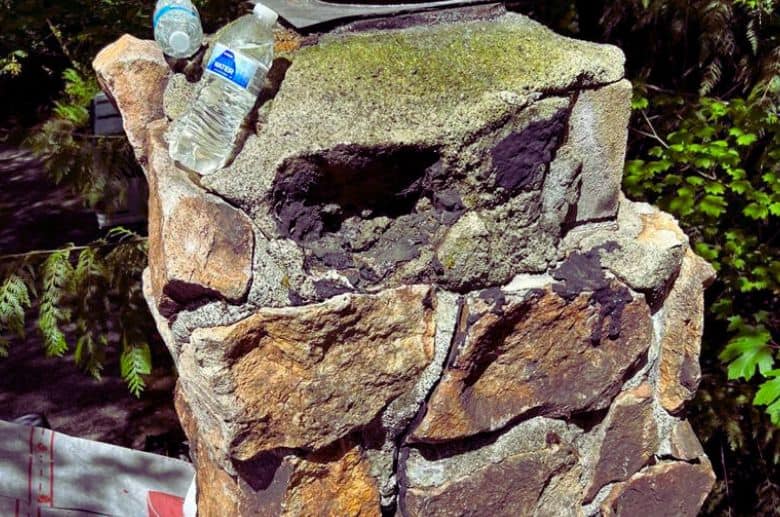
Spalling chimneys can cause bricks to crack, weakening the chimney’s overall structure. If the cracks are not repaired, the chimney may lean or collapse.
This can be a serious hazard, as the collapse of a chimney can cause damage to the surrounding structure and create a risk of injury to those nearby.
Water Leaks
One of the main risks of a spalling brick chimney is the possibility of water leaks. When the surface of the bricks begins to flake away, it creates cracks and gaps that can allow water to enter the chimney.
This can lead to water damage to the surrounding structure, as well as the formation of mold and mildew.
Moisture Retention
The retention of moisture in a cracked chimney can lead to the growth of mold and mildew. This can have adverse health effects, as mold and mildew can cause respiratory issues and allergies.
It is essential to address any moisture issues in a chimney as soon as possible to prevent the growth of these harmful substances.
Affects Surrounding “Good” Bricks
When a chimney is affected by spalling, it can also affect the surrounding bricks. The cracks and gaps created by the flaking of the surface can allow water and other substances to enter the chimney, weakening the surrounding bricks.
This can lead to a cascading failure, where the damage to the chimney spreads to other areas of the structure. It is crucial to address spalling as soon as it is noticed to prevent further damage to the chimney and surrounding structure.
How to Repair Spalling Brick on Chimney
You can use several methods to repair spalling brick on your chimney, and we discuss the best options in more detail below.
Treatment for Early Spalling
Early spalling is when the surface of a brick begins to flake or peel away, typically due to water damage or freeze-thaw cycles. It is important to address early spalling as soon as possible to prevent further damage to the chimney.
Step 1: Analyze the Issue
Before beginning any repairs, it is crucial to determine the cause of the spalling. This may involve inspecting the chimney for cracks or other damage-causing water infiltration.
If the cause is not immediately apparent, it may be necessary to consult with a professional.
Step 2: Replacing with the Right Brick or Bricks
If the spalling is limited to a few bricks, replacing them with new bricks that match the existing ones may be possible.
It is essential to use bricks similar in size, color, and texture to the existing ones to ensure a seamless repair.
Step 3: Cutting the Spalled Brick Out
If the spalling is more extensive, removing and replacing a more significant portion of the chimney may be necessary.
This involves cutting out the spalled brick with a hammer and chisel, not damaging the surrounding bricks.
Step 4: Working With the Mortar
Once the spalled brick has been removed, it is crucial to properly prepare the new brick area. This involves cleaning the area and applying new mortar to secure the new brick.
Step 5: Replacement
Finally, the new brick can be placed into the prepared area and secured with additional mortar. It is crucial to ensure that the new brick is properly aligned with the surrounding bricks and that the mortar is properly cured before completing the repair.
Treatment for Late Spalling
Late spalling is when the damage to a brick has become extensive, often resulting in large chunks falling off. This typically requires more extensive repairs and may require the services of a professional.
In the case of late spalling, the chimney will likely need to be completely dismantled and rebuilt using new bricks. This can be a time-consuming and complex process that requires specialized tools and expertise.
Trusting this work to a professional is vital to ensure that the repair is done correctly and that the chimney is safe to use.
Tips to Prevent a Spalling Chimney
There are several steps you can take to prevent spalling in your chimney.
Use Masonry Sealant
Applying a masonry sealant is one way to prevent spalling in a chimney. This type of coating is applied to the surface of the chimney to protect it from moisture, which can cause the bricks to weaken and eventually crumble.
To apply a masonry sealant, follow these steps:
- Clean the surface of the chimney thoroughly. Use a wire brush or pressure washer to remove dirt, debris, or loose bricks from the surface.
- Allow the chimney to dry completely. This may take several days, depending on the weather.
- Mix the masonry sealant according to the manufacturer’s instructions.
- Apply the sealant to the chimney using a paintbrush or roller. Make sure to cover the entire surface evenly, including the joints between the bricks.
- Allow the sealant to dry completely, following the manufacturer’s recommended drying time.
Install a Chimney Cap
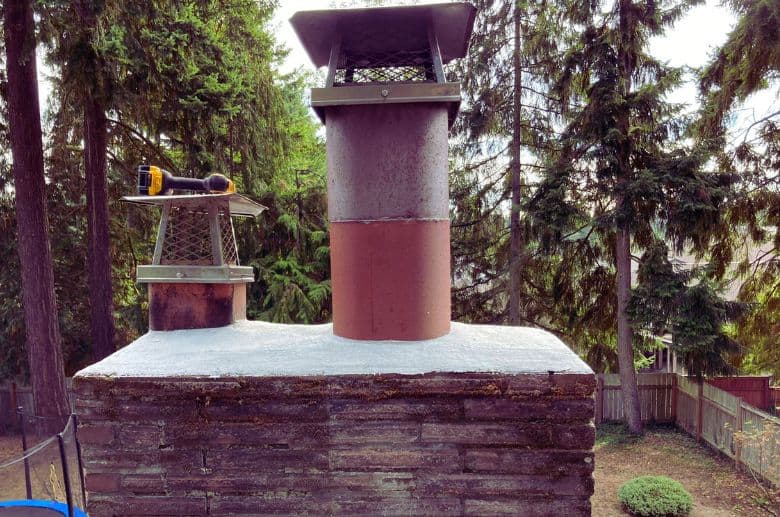
Another way to prevent spalling in a chimney is to install a chimney cap. A chimney cap is a metal cover that fits over the top of the chimney and prevents water, animals, and debris from entering the chimney.
To install a chimney cap, follow these steps:
- Measure the dimensions of the chimney flue to ensure you purchase the correct size chimney cap.
- Purchase a chimney cap made of durable materials, such as stainless steel or copper.
- Follow the manufacturer’s instructions to install the chimney cap. This may involve attaching mounting brackets to the chimney and securing the cap to the brackets with screws or bolts.
- If it seems too complicated, don’t hesitate to contact professional help.
Watch Out for Any Leaks From the Chimney
Moisture is one of the leading causes of spalling in a chimney, so it’s essential to watch out for any leaks that may allow water to enter the chimney.
Some signs that your chimney may be leaking include:
- Water stains on the ceiling or walls near the chimney
- Musty or moldy odors coming from the chimney
- Rust or corrosion on the chimney or fireplace
If you notice any of these signs, it’s essential to have the chimney repaired as soon as possible to avoid further damage.
Regular Chimney Inspections
Finally, it’s essential to have your chimney regularly inspected to identify any potential issues before they become significant problems. A professional chimney sweep can inspect the chimney for signs of damage, such as cracks or missing bricks, and recommend repairs as needed.
Having your chimney inspected at least once a year or more frequently if you use your fireplace often is generally recommended.
Chimney Spalling Repair Cost
The average cost of a chimney spalling repair job can range from $1000 to $3000, depending on the extent of the damage and the required repairs.
It’s important to remember that while it may be tempting to try DIY repairs or attempt to cut costs by hiring a non-professional, these methods are not recommended. Trusting this work to an experienced professional is essential to ensure that the repair is done correctly.
Not only will this safeguard your safety, but it will also help preserve your chimney’s integrity for years to come. Working with an experienced professional can also help minimize repair costs and ensure you don’t have to pay for unnecessary repairs or materials.
Conclusion
Spalling is a serious issue that can lead to costly repairs if left unchecked. Taking the time to inspect your chimney regularly, install a masonry sealant, and install a chimney cap can help prevent spalling from occurring in the first place.
If you notice any signs of a spalling chimney, please contact an experienced professional for repairs to avoid further damage. With proper care and maintenance, you can keep your chimney in great condition for years to come.

